Breakfast over. we headed back to the little village of Broke. Given my companion’s cold, we needed to stop at the little general store for supplies and especially bottled water!
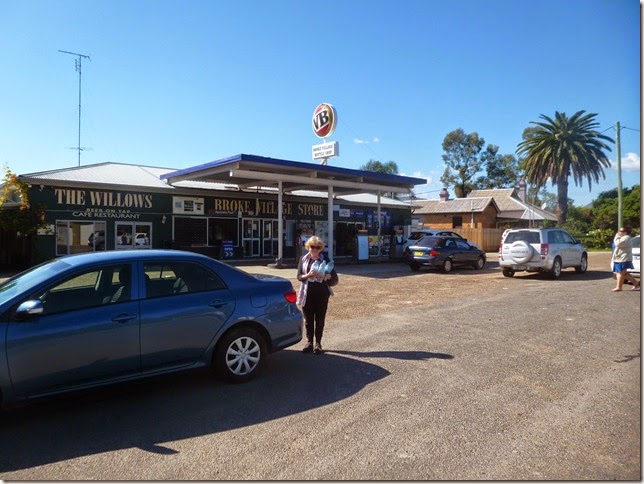
While water was being gathered, I wandered across the road to the little war memorial. Your find these in all Australian country towns, but this one was more domestic, less monumental, than most. 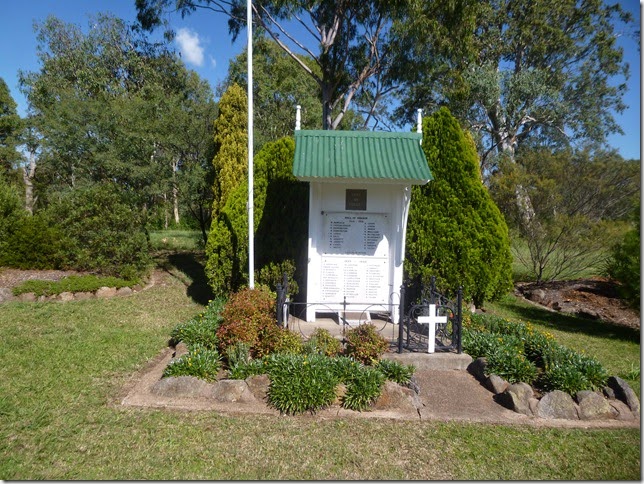
Broke lies on Wollombi Brook. Marked yellow on the map, Wollombi Brook rises below Mount Warrawolong in the Watagan Mountains. Starting at an elevation of 426m, it flows north-east for 118km before joining the Hunter River, dropping 378m. Our journey to the Hunter the day before (Journey to the Hunter – Friday 18 April 2014: the adventure starts) had tracked the Brook and its little villages. There is some beautiful country with many byways, although this time we were just travelling through to Pokolbin. 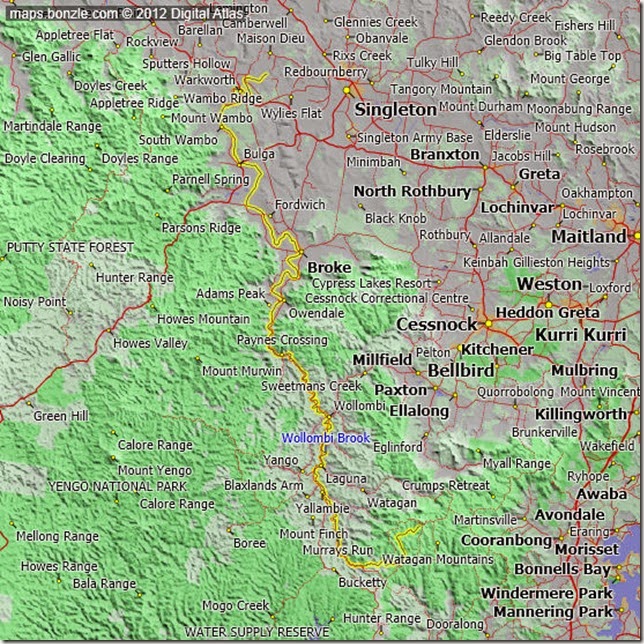
I had wanted to visit the Broke Fordwich region for a number of reasons. One was the desire just to see the place, a second to see for myself the changes that were taking place, including the conflict between agricultural and industrial activities.
When I first started driving between Armidale and Sydney or Canberra, I drove the Putty Road. That’s the red line on the top left of the map, heading south west from Singleton through Bulga and Howes Valley to Windsor on the outskirts of Sydney. Later, I discovered the Wollombi-Broke Road, the road tracing the course of Wollombi Brook. This was considerably shorter, but included long stretches of often dusty dirt/gravel roads. I grew up driving on dirt roads and liked them, leaning how to navigate the mix of potholes (go slow) and corrugations (go fast), how to manage the loose gravel or dirt that could easily cause the car to spin. Mind you, it wasn’t necessarily good for the car, with the flying gravel effectively stripping the lower paint away.
At the time I first drove these roads, this was an area frozen in time. Its period as the main route north was long gone, quickly replaced by cheaper sea and river transport to Morpeth on the Hunter. This freezing in time effect had preserved many of the older buildings, the early historical framework, making for an interesting drive.
This was now to change. In 1963, Dr Max Lake established Lake’s Folly, the first of the new boutique wineries in the Hunter. In 1968 or 1969, I have seen both dates us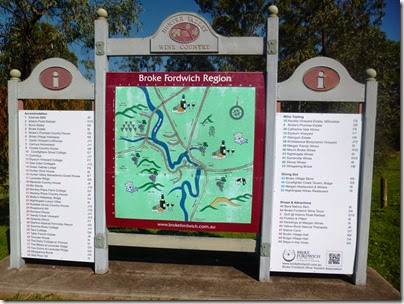 ed, Len Evans established Rothbury Wines. In that year, Graham Kerr launched his Galloping Gourmet TV program. The age of fine dining, the extravagant four bottle business lunch of the 1970s, was dawning.
ed, Len Evans established Rothbury Wines. In that year, Graham Kerr launched his Galloping Gourmet TV program. The age of fine dining, the extravagant four bottle business lunch of the 1970s, was dawning.
The start of the 1980s saw the explosion of what would come to be called the sea change/tree change phenomenon. As part of this, boutique wineries spread across the Hunter, finally spreading to the quiet Wollombi Valley. With this came new agricultural activities and food stuffs, including especially the now ubiquitous olives. Then came the resorts.
The scale of all this is illustrated by the photo of the Broke Fordwich tourism display. You won’t be able to read the names; the significant thing is the just the number. None of this existed when I first drove through Broke all those years ago.
The area retains its natural beauty. This is illustrated by the following photo, a pastoral scene of black Angus cattle with the Broken Back range in the background. The wineries have added further texture to this beauty. 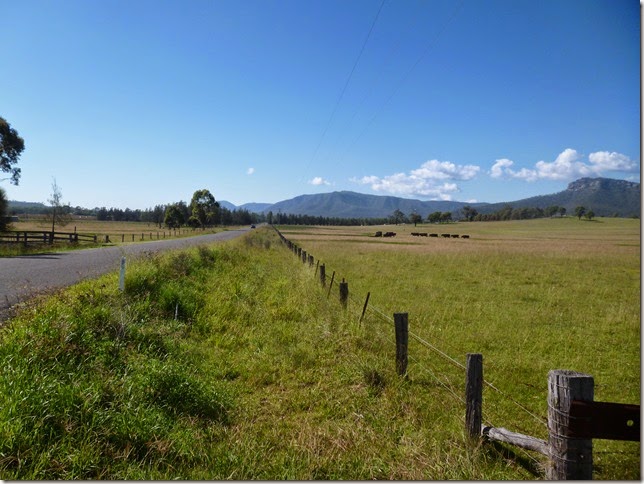
Aeons ago, a shallow inland sea existed in what is now called the Gondwana Supercontinent. There coral and other animal or plant stuff formed deep sediments. As Gondwana was torn apart by huge geological shifts, those sediments were covered and transformed, finally forming extensive coal deposits. Today, we call this the Sydney-Gunnedah-Bowen Basin.
The next shows< think, the Warkworth open cut coal mine just to the north of Broke on the other side of the Putty Road. There are, in act, two mines. The first is the Warkworth Mine north of the Putty Road. On the other side, you have the Mount Thorley mine running down towards Broke. Both mine are run as one by Rio Tinto subsidiary Coal & Allied Industries. The little village of Bulga on the Putty Road lies between them.
The photo shows the sheer scale of industrial activity. Those coal trucks at the bottom left of the photo are clearly big, but you only really get a feel for their size if you let your eyes stand back a little and look at them against the scale of the mine. They really are big. Further comments follow the photo. 
As a New England historian, I am interested in the role that King Coal has played in New England history. There is an untold story here of national significance that I am only just coming to grips with. That was part of the reason for this trip. As an economist. I am interested in the economic aspects of coal development. As a traveller and somewhat one-eyed New England patriot, I am interested in the current impact and what it means for the future.
Warkworth vs Bulga is a hot current story, part of the environmental wars that have swept Northern NSW, my broader New England. Should the mine be allowed to expand if it threatens, as it does, the very survival of Bulga as a village and the beautiful country around it? That is the key issue in current court cases and political activism in the area.
I will leave the story of our trip here, continuing in the next instalment.
For those who want to follow along with the story, you will find the entry point for all the posts here.












No comments:
Post a Comment